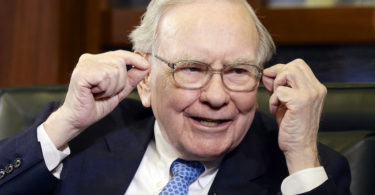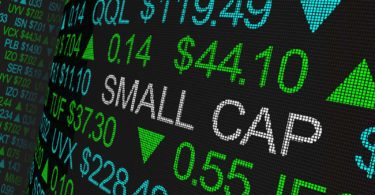Introduction
Coinbase Global (NASDAQ: COIN) – the leading U.S. cryptocurrency exchange – is undergoing a strategic pivot that could redefine its financial profile. After a challenging crypto bear market in 2022, Coinbase managed to turn an annual profit in 2023, aided by a surge in fourth-quarter trading revenue and cost cuts ([1]). Most notably, the company restructured its partnership with Circle (issuer of the USDC stablecoin) in August 2023 to secure a significant share of interest income from USDC reserves ([1]). This move diversifies Coinbase’s revenues beyond volatile trading fees and may provide a steadier income stream – a development some analysts say “sets an example” as a crypto firm matures into mainstream finance ([2]). Below, we dive into Coinbase’s fundamentals – from dividends and debt to valuation and risks – to understand the implications of this new direction.
Dividend Policy & Yield
Coinbase has never paid a dividend and does not plan to in the foreseeable future ([3]). As a growth-oriented tech company, it has consistently reinvested earnings into the business rather than returning cash to shareholders. Management explicitly states it is “not obligated to pay any dividends…and [does] not anticipate paying any dividends…in the foreseeable future.” ([3]). Consequently, COIN’s dividend yield is 0%, and investors seeking income must rely on potential stock price appreciation instead.
Leverage and Debt Maturities
Coinbase carries a moderate long-term debt load consisting mainly of a convertible note and senior bonds issued during its 2021 expansion. As of December 31, 2023, total debt stood at about $3.0 billion, after the company opportunistically repurchased ~$427 million of its bonds at a discount in 2023 ([3]). The remaining debt includes approximately $1.3 billion of Convertible Notes due 2026, plus $1.0 billion of Senior Notes due 2028 and $0.7 billion of Senior Notes due 2031 ([3]). These maturities are well-staggered, with no major principal due until mid-2026, giving Coinbase some breathing room. Notably, the 2028 and 2031 bonds were issued at relatively low fixed rates (3.375% and 3.625% coupons, respectively) during 2021’s low-rate environment ([3]), which helps keep interest costs manageable in the near term.
Leverage relative to assets or cash flow appears conservative. Coinbase held a robust $5.14 billion in cash and equivalents on its balance sheet at 2023 year-end ([3]), plus hundreds of millions in USD Coin (USDC) holdings as additional liquidity ([3]). This means gross debt ($3.0 B) is substantially offset by cash reserves, resulting in a net cash position. Such liquidity, along with the company’s ability to raise equity or adjust expenses, provides flexibility in meeting its debt obligations. The company’s debt-to-equity ratio is not alarming, and major credit rating agencies currently rate Coinbase in the mid “BB” (speculative grade) range, reflecting both the healthy balance sheet and crypto-related business risks ([3]).
Interest Coverage and Cash Flow Coverage
Despite the sizable debt, Coinbase’s interest burden is quite manageable. In 2023, total interest expense was about $83 million ([3]) – a small fraction of revenue and an amount easily covered by the interest income Coinbase earned on customer cash and USDC reserves. In fact, rising interest rates have turned Coinbase’s large cash holdings and custodial funds into a revenue source: interest and stablecoin yield made up a growing portion of 2023 revenue ([3]). By year-end 2023, Coinbase’s interest income (from customer fiat deposits and USDC reserves) far exceeded its interest expense, contributing to net other income of $168 million ([3]).

Elon Musk’s Dire Warning: $36T Debt Crisis May Hit Retirees Hardest
Washington’s spending could spark soaring rates and stock crashes — protect retirement accounts with a Self-Directed Gold IRA backed by physical gold.
From a cash flow perspective, the company’s operating cash flows and cash on hand provide ample cushion for fixed charges. Coinbase’s $5+ billion cash war chest could theoretically cover over 60 times its annual interest expense ([3]) ([3]). Even in the brutal crypto downturn of 2022, Coinbase maintained positive adjusted operating cash flow by cutting costs (e.g. layoffs) and benefited from interest income as rates rose. This suggests that debt service coverage is not a near-term concern, as long as Coinbase can stabilize its core business performance. However, if industry conditions deteriorate severely (reducing cash flows) or if the company embarked on much heavier borrowing, the coverage ratio would need reassessment. For now, Coinbase’s credit profile appears sound, with interest obligations well-covered by existing resources.
Valuation and Comparables
Valuing Coinbase is challenging given its volatile earnings and the nascency of pure-play crypto firms. Traditional metrics like price-to-earnings (P/E) are less meaningful when earnings swing between large losses and profits with crypto cycles. Instead, many analysts look at price-to-sales (P/S) or enterprise value to EBITDA ratios while benchmarking Coinbase against both fintech firms and exchange operators.
At the time of writing, COIN’s stock has rallied strongly, reflecting renewed crypto optimism – it was even added to the S&P 500 index in May 2025, a first for a crypto exchange ([2]) ([2]). This mainstream inclusion boosted demand for the shares and signifies investor confidence in Coinbase’s staying power. The stock’s surge has expanded Coinbase’s market capitalization to roughly $70–80 billion, which implies a double-digit P/S multiple on trailing revenues (COIN trades around 9–10× sales, versus single-digit multiples for traditional stock exchanges) ([4]) ([5]). Such a rich valuation assumes significant growth ahead, whether through higher trading volumes, new revenue streams, or margin expansion. By comparison, financial exchanges like CME or Nasdaq trade at ~5–8× sales, and fintech brokers like Robinhood at lower multiples, underscoring that investors are effectively pricing Coinbase more like a high-growth tech platform than a mature financial utility.
This growth premium may be warranted if Coinbase’s “new moves” pay off. The company is rapidly growing its Subscription & Services revenue (which grew to $1.4 B in 2023 from $0.8 B in 2022) ([3]), thanks to USDC interest, staking fees, and other non-trading services. A key question for valuation is how durable and scalable these revenues are compared to trading fees. If Coinbase can build a steadier, more diversified income base (e.g. a “crypto AWS” through its Coinbase Cloud APIs and the new Base blockchain platform) ([3]), the high multiple could be justified. On the other hand, risks of regulatory disruption or crypto downturns could quickly compress that premium. In short, COIN’s valuation is a bet on continued crypto adoption and Coinbase’s pivotal role in it – with the market pricing in a brighter future than recent earnings alone would dictate.
Risks and Red Flags
While Coinbase’s prospects are promising, the company faces significant risks and red flags that investors should weigh:
– Regulatory and Legal Overhang: Coinbase is entangled in a high-stakes legal battle with the SEC. In June 2023, the SEC sued Coinbase, alleging it operated as an unregistered securities exchange and broker and that certain products (like its staking-as-a-service) constituted unregistered securities offerings ([3]). This case – which Coinbase is vigorously contesting ([1]) – creates uncertainty around which crypto assets and services Coinbase can legally offer in the U.S. Several state regulators have also issued orders regarding Coinbase’s staking product, reflecting broader scrutiny ([3]) ([3]). The outcome of these regulatory disputes could materially impact Coinbase’s business model. A court ruling or settlement might force Coinbase to delist popular tokens, halt certain services, or incur fines, whereas a favorable outcome or regulatory reform (potentially spurred by a more crypto-friendly administration) could remove a major overhang.
The #1 Crypto to “Buy the Dip” With Right Now
– Crypto Market Volatility: Coinbase’s financial performance remains highly correlated to the crypto market cycle. Around 50–55% of trading volume (and revenue) comes from just Bitcoin and Ethereum ([3]), and overall trading activity is driven by crypto prices and volatility. When crypto prices or volumes plunge – as in 2022 – Coinbase’s revenues can drop sharply, leading to large losses. The company itself warns that its operating results will “fluctuate significantly” due to the inherently volatile cryptoeconomy ([3]) ([3]). This cyclicality is a key risk: Coinbase is profitable in boom times and unprofitable in lean times. If the crypto market experiences prolonged stagnation or decline, Coinbase would likely face renewed losses and pressure to cut costs further.
– Competition (Both Regulated and Unregulated): Coinbase operates in an intensely competitive arena. On one side, traditional fintech and brokerage firms (like PayPal or Robinhood) offer crypto trading to their millions of users. On the other, crypto-native exchanges like Binance (offshore) and decentralized exchanges (Uniswap, etc.) present alternatives often with lower fees or a wider array of tokens. Many of Coinbase’s rivals operate in jurisdictions with lenient or no regulation, allowing them to list more assets or offer high-leverage products that Coinbase (as a U.S.-regulated entity) cannot ([3]) ([3]). This puts Coinbase at a competitive disadvantage** in attracting certain traders who seek those riskier offerings. Moreover, decentralized finance (DeFi) platforms enable peer-to-peer trading without intermediaries, posing a longer-term threat if they gain mainstream traction ([3]) ([3]). Coinbase’s challenge is to maintain its reputation as a trusted, compliant platform while still innovating fast enough – not an easy balance in a fast-moving industry.
– Operational and Cost Concerns: A notable red flag has been Coinbase’s high cost structure, particularly in headcount and stock-based compensation (SBC). During the 2021 boom, Coinbase rapidly expanded and by 2022 was burdened with very high operating expenses, contributing to its heavy losses that year. For example, stock-based compensation expense in 2022 topped $1.56 billion, equivalent to ~50% of revenue, before being pared down to $780 million in 2023 ([3]). While management has taken steps to cut costs (including multiple rounds of layoffs and SBC reduction), dilution and expense control remain concerns. If crypto trading volumes stay moderate, Coinbase will need continued discipline to avoid burning cash on an outsized cost base. Additionally, like any crypto custodian, Coinbase faces operational risks such as cybersecurity threats, system outages, or custody incidents – a major hack or loss of client assets (were it to occur) would be a severe blow to its reputation and could trigger regulatory repercussions ([3]) ([3]).
In sum, Coinbase must navigate a minefield of risks: it needs to keep regulators onside, outcompete nimble global players, and manage the wild swings of crypto markets – all while controlling internal costs. These risk factors mean the road ahead could be bumpy, even if the destination (a crypto-integrated financial system with Coinbase as a key player) is potentially very rewarding.
Open Questions
Coinbase’s recent moves open up several key questions for the future:
– Regulatory Resolution – When and How? The biggest question mark is how the regulatory climate will evolve. Will Coinbase’s courtroom fight with the SEC yield a clear legal framework enabling it to list crypto assets with confidence? Or might it be forced to alter its product lineup (for instance, dropping staking or certain tokens) to comply with securities laws? Clarity could also come legislatively – there are signals of a more crypto-friendly stance after the 2024 U.S. elections, but nothing is certain. Until resolved, this uncertainty will hover over Coinbase’s expansion plans.
– Sustainability of New Revenue Streams: Coinbase’s reliance on trading revenue is gradually shrinking in favor of subscription and services revenue (almost 48% of 2023 net revenue came from non-trading sources) ([3]). A crucial open question is how sustainable and scalable these streams are. Interest income from USDC reserves and customer fiat has been a boon, but it’s tied to prevailing interest rates and USDC adoption. If the Federal Reserve cuts rates significantly (for example, back down to pre-2022 levels), Coinbase’s stablecoin revenue would correspondingly decline ([3]) ([3]), putting pressure back on trading income. Similarly, blockchain staking rewards and custody fees depend on crypto participation levels and could drop if a bear market returns. Can Coinbase continue growing its services like USDC, staking, cloud APIs, and NFTs to offset any trading downturns? The company’s strategy is clearly to be more than just a trading platform, but it will take time to prove that these businesses can perform through all market conditions.
– Market Share and International Strategy: Another question is whether Coinbase can expand its market share globally in the face of competition. Domestically, Coinbase is the clear leader in regulated crypto trading, but internationally it trails players like Binance in volume. Coinbase has launched a “Coinbase International Exchange” for derivatives in Bermuda and is investing in overseas growth, but can it meaningfully capture non-U.S. customers? If U.S. regulations remain stringent while offshore competitors operate freely, Coinbase’s share of the total crypto market could be capped. Conversely, if Coinbase’s compliance and brand reputation attract institutional capital (as evidenced by its inclusion in the S&P 500 and Oppenheimer’s endorsement as a watershed moment ([2]) ([2])), it could become the venue of choice as the industry matures. The balance between pursuing international opportunities and staying within regulatory guardrails is an open strategic question.
– Diversification into Web3 – Vision or Hype? Coinbase is also positioning itself for a Web3 future – with initiatives like Base (its own Ethereum Layer-2 network) and Coinbase Wallet/Cloud services for developers ([3]). These efforts aim to embed Coinbase in the next generation of decentralized applications and on-chain activity. An open question is how – and when – these could translate into meaningful revenue. For instance, will Coinbase’s Base chain bring in fees or simply promote more transactions that feed back into Coinbase’s exchange? Can Coinbase become the go-to platform for integrating crypto payments or decentralized identity for mainstream apps? If the crypto economy “changes everything” as Coinbase’s mission suggests, the company wants to be at the center of it – but the form that will take (and the business model around it) is still unfolding.
In conclusion, Coinbase’s new strategic moves – particularly tapping into stablecoin revenue and pushing for broader crypto utility – could indeed “change everything” for its business model by smoothing out revenue and embedding it deeply in the crypto ecosystem. Yet the company’s fortunes remain intertwined with the volatile crypto market and an uncertain regulatory environment. Investors will be watching how these open questions are resolved in the coming quarters. Coinbase has survived and adapted through a brutal down-cycle, and it now enters its next chapter as a more diversified, but still risk-exposed, pioneer. Whether that next chapter fulfills the bullish narrative implied in its valuation is what makes COIN one of the market’s most fascinating – and debated – stocks.
Sources: All information and data points are derived from Coinbase’s SEC filings and investor communications, as well as credible financial media coverage (Axios, Reuters, CNBC, etc.), as cited in-line above.
Sources
- https://axios.com/2024/02/16/coinbase-profit-earnings-2023
- https://thestar.com.my/tech/tech-news/2025/05/13/coinbase-shares-jump-on-addition-to-sp-500-index
- https://sec.gov/Archives/edgar/data/1679788/000167978824000022/coin-20231231.htm
- https://ycharts.com/companies/COIN/ps_ratio
- https://macrotrends.net/stocks/charts/COIN/coinbase-global/pe-ratio
For informational purposes only; not investment advice.





